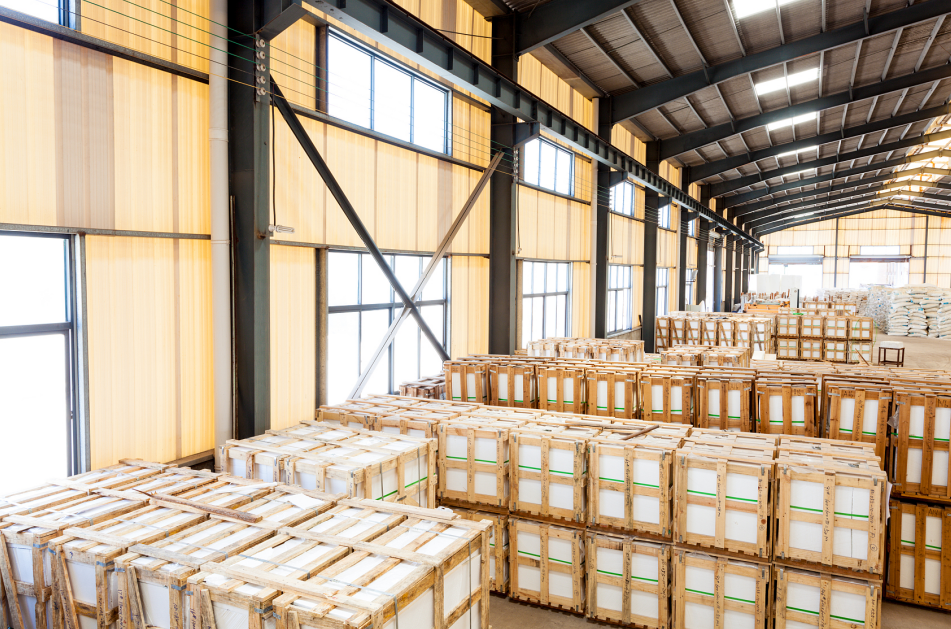Home >> News >> Industry News
This report on "Intelligent Industrial Lighting market" is a comprehensive analysis of market shares, strategies, products, certifications, regulatory approvals, patent landscape, and manufacturing capabilities of the top players. And this market is projected to grow annually by 5.2% from 2024 to 2031.
Intelligent Industrial Lighting Market Report Outline, Market Statistics, and Growth Opportunities. The Intelligent Industrial Lighting market is experiencing robust growth, driven by the increasing adoption of smart technologies in various sectors such as manufacturing, logistics, and warehousing. As companies prioritize energy efficiency and sustainability, innovations in LED technology and automation are reshaping market conditions.
The integration of Internet of Things capabilities allows for enhanced control and efficiency, presenting substantial opportunities for growth. However, challenges such as high initial investment costs and the need for skilled personnel to manage advanced systems persist. Market players are focusing on developing adaptable solutions that can easily integrate with existing infrastructures. The rising emphasis on workplace safety and employee well-being further bolsters demand, as intelligent lighting adjusts to environmental conditions. As industry standards evolve, the potential for significant advancements in smart lighting systems continues to emerge, positioning the market for expansive growth in the coming years.
Ⅰ. Market Segmentation and Coverage (2024 - 2031)
Intelligent industrial lighting comprises various types tailored for efficiency and effectiveness in different environments.
**Basic Lighting** includes standard LED and fluorescent fixtures designed for general illumination.
**Specialty Lighting** encompasses task lighting, high-bay lights, and floodlights for specific functions and areas.
In **factories**, intelligent systems optimize energy usage and enhance worker safety through adaptive controls and sensors. **Warehouses** benefit from automated lighting solutions that adjust based on occupancy, minimizing energy waste. Other industrial settings, such as logistics and assembly lines, utilize smart lighting to ensure optimal visibility and support operational efficiency, ultimately improving productivity and reducing costs.
1.In terms of Product Type, the Intelligent Industrial Lighting market is segmented into:
Basic Lighting
Specialty Lighting
2. In terms of Product Application, the Intelligent Industrial Lighting market is segmented into:
Factory
Warehouses
Others

3.Companies Covered: Intelligent Industrial Lighting Market
Philips
TRILUX
Current Lighting Solutions
REFLECTA
Infineon Technologies
SES Lighting
Lumiqs
OSRAM
Cree Lighting
Mouser Electronics
The Intelligent Industrial Lighting market is primarily dominated by established players like Philips, OSRAM, and Cree Lighting, known for their extensive product portfolios and advanced technology. Philips leads with innovative solutions and a robust global presence, while OSRAM focuses on smart integration and energy efficiency. Current Lighting Solutions and TRILUX emphasize connectivity and sustainability, enhancing their market competitiveness.

New entrants like Lumiqs and REFLECTA contribute fresh perspectives and technologically driven products that leverage IoT and automation, appealing to forward-thinking industries. Infineon Technologies focuses on semiconductor solutions that enhance lighting efficiency and data integration, positioning itself as a crucial player in the growth of smart lighting systems.
Key strategies include partnerships and collaborations for integrated solutions, investments in R&D for innovative products, and a strong emphasis on sustainability to meet evolving regulatory standards. The combination of smart features with energy efficiency is shaping market dynamics and driving growth.
4.Sales revenue figures (approximate):
- Philips: $20 billion
- OSRAM: $4 billion
- Cree Lighting: $1 billion
- Current Lighting Solutions: $800 million
- Infineon Technologies: $8 billion
- TRILUX: $600 million
- Mouser Electronics: $700 million
- SES Lighting: $500 million
- REFLECTA: $300 million
- Lumiqs: $150 million
5.Intelligent Industrial Lighting Geographical Analysis
-North America: United States, Canada
-Europe: Germany, France, UK, Italy, Russia
-Asia-Pacific: China, Japan, South Korea, India, Australia, Chinese Taipei, Indonesia, Thailand, Malaysia
-Latin America: Mexico, Brazil, Argentina, Korea, Colombia
-Middle East & Africa: Turkey, Saudi Arabia, UAE
The Intelligent Industrial Lighting market is experiencing significant growth across various regions. North America, particularly the United States, remains dominant, driven by technological advancements and increased energy efficiency awareness. Europe, especially Germany and the U.K., follows closely, with strong investments in smart technologies. In Asia-Pacific, China and Japan are key players, fueled by rapid industrialization and smart city initiatives. Latin America, with Brazil and Mexico, shows emerging potential, while the Middle East & Africa, led by the UAE and Saudi Arabia, are gradually adopting intelligent solutions, though they remain smaller markets. Overall, North America maintains the largest market share.

Ⅱ. Future Outlook of Intelligent Industrial Lighting Market
The Intelligent Industrial Lighting market is poised for significant growth, driven by increasing energy efficiency demands and advancements in IoT technology. Current trends highlight the integration of smart lighting systems with AI and automation, enhancing operational performance and safety. The expansion of smart factories and the focus on sustainability are further propelling market adoption. Future prospects include the rise of adaptive lighting solutions that adjust in real-time to environmental conditions, alongside the integration of data analytics for predictive maintenance. As industries prioritize intelligent solutions, the market is expected to witness robust expansion in the coming years.